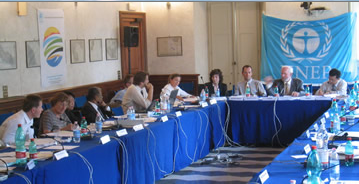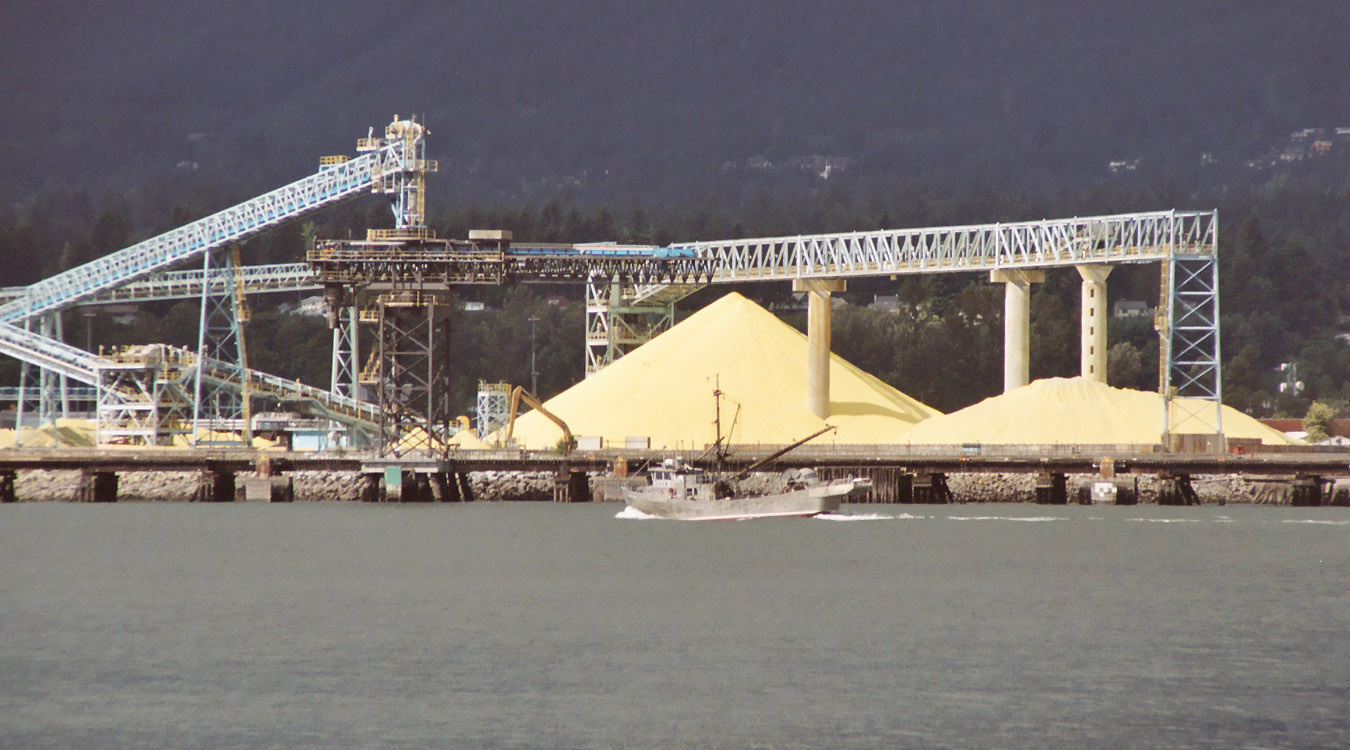|
Assessing The Environmental Impacts Of Consumption And Production
''Assessing the Environmental Impacts of Consumption and Production: Priority Products and Materials'' is a scientific assessment published in 2010 by the International Resource Panel (IRP) of the United Nations Environment Programme (UNEP). The report assessed the environmental impact of several activities, including food production. Summary The report assessed the impact of economic activities on the environment. It identified that the most critical impacts are related to ecosystem health, human health and resource depletion. From a combined production, consumption and materials perspective, the authors found that the production of food and all processes involving fossil fuels had the greatest impacts. Animal products caused more damage than producing construction minerals such as sand or cement, plastics or metals. Currently, more than half the world's crops are used to feed animals. In America, more than one-third of the fossil fuels produced are used to raise animals for foo ... [...More Info...] [...Related Items...] OR: [Wikipedia] [Google] [Baidu] |
International Resource Panel
The International Resource Panel is a scientific panel of experts that aims to help nations use natural resources sustainably without compromising economic growth and human needs. It provides independent scientific assessments and expert advice on a variety of areas, including: * The volume of selected raw material reserves and how efficiently these resources are being used * The lifecycle-long environmental impacts of products and services created and consumed around the globe * options to meet human and economic needs with fewer or cleaner resources. The Secretariat of the IRP is hosted by the United Nations Environment Programme (UN Environment) through its office in Paris, France. Structure of the IRP The Panel has more than 35 expert members drawn from a wide range of academic institutions and scientific disciplines, supported by a small Secretariat hosted by UNEP. It is co-chaired by Janez Potočnik, former European Commissioner for the Environment, and Izabella Teixeira, for ... [...More Info...] [...Related Items...] OR: [Wikipedia] [Google] [Baidu] |
UNEP
The United Nations Environment Programme (UNEP) is responsible for coordinating responses to environmental issues within the United Nations system. It was established by Maurice Strong, its first director, after the Declaration of the United Nations Conference on the Human Environment, United Nations Conference on the Human Environment in Stockholm in June 1972. Its mandate is to provide leadership, deliver science and develop solutions on a wide range of issues, including climate change, the management of marine and terrestrial ecosystems, and green economic development. The organization also develops international environmental agreements; publishes and promotes environmental science and helps national governments achieve environmental targets. As a member of the United Nations Development Group, UNEP aims to help the world meet the 17 Sustainable Development Goals. UNEP hosts the secretariats of several multilateral environmental agreements and research bodies, including Conven ... [...More Info...] [...Related Items...] OR: [Wikipedia] [Google] [Baidu] |
Ecosystem
An ecosystem (or ecological system) is a system formed by Organism, organisms in interaction with their Biophysical environment, environment. The Biotic material, biotic and abiotic components are linked together through nutrient cycles and energy flows. Ecosystems are controlled by external and internal Environmental factor, factors. External factors—including climate—control the ecosystem's structure, but are not influenced by it. By contrast, internal factors control and are controlled by ecosystem processes; these include decomposition, the types of species present, root competition, shading, disturbance, and succession. While external factors generally determine which Resource (biology), resource inputs an ecosystem has, their availability within the ecosystem is controlled by internal factors. Ecosystems are wikt:dynamic, dynamic, subject to periodic disturbances and always in the process of recovering from past disturbances. The tendency of an ecosystem to remain clo ... [...More Info...] [...Related Items...] OR: [Wikipedia] [Google] [Baidu] |
Resource Depletion
Resource depletion occurs when a natural resource is consumed faster than it can be replenished. The value of a resource depends on its availability in nature and the cost of extracting it. By the law of supply and demand, the Scarcity, scarcer the resource the more valuable it becomes. There are several types of resource depletion, including but not limited to: wetland and ecosystem degradation, soil erosion, aquifer depletion, and overfishing. The depletion of wildlife populations is called ''defaunation''. It is a matter of research and debate how humanity will be impacted and what the future will look like if resource consumption continues at the current rate, and when specific resources will be completely exhausted. History of resource depletion The depletion of resources has been an issue since the beginning of the 19th century amidst the Industrial Revolution, First Industrial Revolution. The extraction of both renewable and non-renewable resources increased drasticall ... [...More Info...] [...Related Items...] OR: [Wikipedia] [Google] [Baidu] |
Food
Food is any substance consumed by an organism for Nutrient, nutritional support. Food is usually of plant, animal, or Fungus, fungal origin and contains essential nutrients such as carbohydrates, fats, protein (nutrient), proteins, vitamins, or Mineral (nutrient), minerals. The substance is Ingestion, ingested by an organism and assimilated by the organism's Cell (biology), cells to provide energy, maintain life, or stimulate growth. Different species of animals have different List of feeding behaviours, feeding behaviours that satisfy the needs of their metabolisms and have evolved to fill a specific ecological niche within specific geographical contexts. Omnivore, Omnivorous humans are highly adaptable and have adapted to obtaining food in many different ecosystems. Humans generally use cooking to prepare food for consumption. The majority of the food energy required is supplied by the industrial food industry, which produces food through Intensive farming, intensive agricu ... [...More Info...] [...Related Items...] OR: [Wikipedia] [Google] [Baidu] |
Minerals
In geology and mineralogy, a mineral or mineral species is, broadly speaking, a solid substance with a fairly well-defined chemical composition and a specific crystal structure that occurs naturally in pure form.John P. Rafferty, ed. (2011): Minerals'; p. 1. In the series ''Geology: Landforms, Minerals, and Rocks''. Rosen Publishing Group. The geological definition of mineral normally excludes compounds that occur only in living organisms. However, some minerals are often biogenic (such as calcite) or organic compounds in the sense of chemistry (such as mellite). Moreover, living organisms often synthesize inorganic minerals (such as hydroxylapatite) that also occur in rocks. The concept of mineral is distinct from rock, which is any bulk solid geologic material that is relatively homogeneous at a large enough scale. A rock may consist of one type of mineral or may be an aggregate of two or more different types of minerals, spacially segregated into distinct phases. S ... [...More Info...] [...Related Items...] OR: [Wikipedia] [Google] [Baidu] |
Cement
A cement is a binder, a chemical substance used for construction that sets, hardens, and adheres to other materials to bind them together. Cement is seldom used on its own, but rather to bind sand and gravel ( aggregate) together. Cement mixed with fine aggregate produces mortar for masonry, or with sand and gravel, produces concrete. Concrete is the most widely used material in existence and is behind only water as the planet's most-consumed resource. Cements used in construction are usually inorganic, often lime- or calcium silicate-based, and are either hydraulic or less commonly non-hydraulic, depending on the ability of the cement to set in the presence of water (see hydraulic and non-hydraulic lime plaster). Hydraulic cements (e.g., Portland cement) set and become adhesive through a chemical reaction between the dry ingredients and water. The chemical reaction results in mineral hydrates that are not very water-soluble. This allows setting in wet conditions or u ... [...More Info...] [...Related Items...] OR: [Wikipedia] [Google] [Baidu] |
Metals
A metal () is a material that, when polished or fractured, shows a lustrous appearance, and conducts electricity and heat relatively well. These properties are all associated with having electrons available at the Fermi level, as against nonmetallic materials which do not. Metals are typically ductile (can be drawn into a wire) and malleable (can be shaped via hammering or pressing). A metal may be a chemical element such as iron; an alloy such as stainless steel; or a molecular compound such as polymeric sulfur nitride. The general science of metals is called metallurgy, a subtopic of materials science; aspects of the electronic and thermal properties are also within the scope of condensed matter physics and solid-state chemistry, it is a multidisciplinary topic. In colloquial use materials such as steel alloys are referred to as metals, while others such as polymers, wood or ceramics are nonmetallic materials. A metal conducts electricity at a temperature of absolute z ... [...More Info...] [...Related Items...] OR: [Wikipedia] [Google] [Baidu] |
Meat
Meat is animal Tissue (biology), tissue, often muscle, that is eaten as food. Humans have hunted and farmed other animals for meat since prehistory. The Neolithic Revolution allowed the domestication of vertebrates, including chickens, sheep, goats, pigs, horses, and cattle, starting around 11,000 years ago. Since then, selective breeding has enabled farmers to produce meat with the qualities desired by producers and consumers. Meat is mainly composed of water, protein, and fat. Its quality is affected by many factors, including the genetics, health, and nutritional status of the animal involved. Without preservation, bacteria and fungi decompose and Meat spoilage, spoil unprocessed meat within hours or days. Meat is Raw meat, edible raw, but it is mostly eaten cooked, such as by stewing or roasting, or Processed meat, processed, such as by Smoking (cooking), smoking or Salting (food), salting. The consumption of meat (especially Red meat, red and processed meat, as opposed ... [...More Info...] [...Related Items...] OR: [Wikipedia] [Google] [Baidu] |
Raw Material
A raw material, also known as a feedstock, unprocessed material, or primary commodity, is a basic material that is used to produce goods, finished goods, energy, or intermediate materials/Intermediate goods that are feedstock for future finished products. As feedstock, the term connotes these materials are bottleneck assets and are required to produce other products. The term raw material denotes materials in unprocessed or minimally processed states such as raw latex, crude oil, cotton, coal, raw biomass, iron ore, plastic, air, lumber, logs, and water. The term secondary raw material denotes waste material which has been recycled and injected back into use as productive material. Raw material in supply chain Supply chains typically begin with the acquisition or extraction of raw materials. For example, the European Commission notes that food supply chains commence in the agricultural phase of food production. A 2022 report on changes affecting international trade noted that ... [...More Info...] [...Related Items...] OR: [Wikipedia] [Google] [Baidu] |









